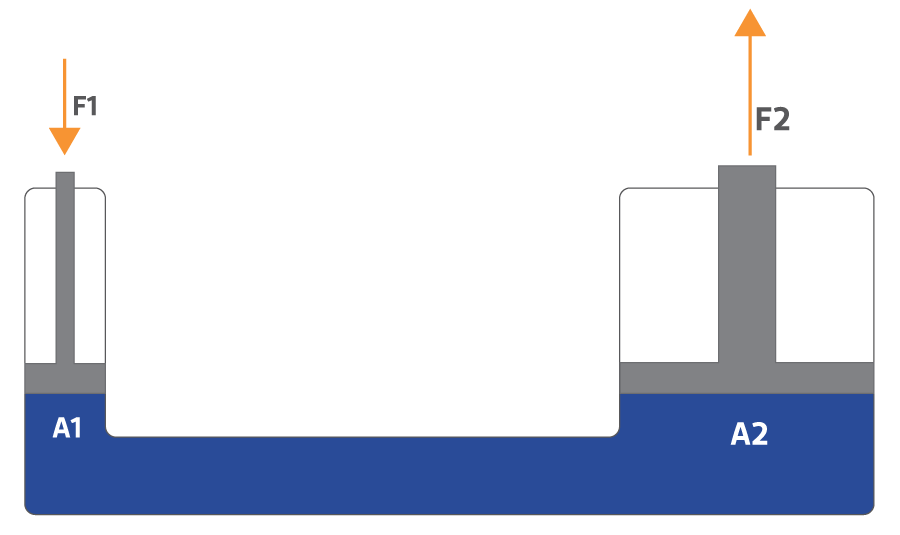How does a hydraulic cylinder work?
How does a hydraulic cylinder work? As we have written in our first blog, a hydraulic cylinder is one of the four main components of a hydraulic system: a mechanical actuator which creates linear movement and works as a machine’s muscle.
But how does a hydraulic cylinder actually work? To start from scratch, a hydraulic cylinder forms its force from pressurized fluid. The most commonly used fluid is mineral oil. To learn how hydraulics work, read this blog post from us. The operation of hydraulic cylinder is based on Pascal’s principle.
According to Pascal’s principle, the pressure is equal to the force divided by the area on which it acts. A pressure used on a piston produces an equal increase in pressure on the second piston in the system. If the area is 10 times the first area, the force on the second piston is 10 times greater, even the pressure is the same throughout the cylinder. The hydraulic press creates this effect, based on Pascal’s principle. Pascal also discovered that the pressure at a point in a fluid at rest is the same in all directions; the pressure would be the same on all planes passing through a specific point.
Let’s explain in a more simple way. In the example below, a small force F1 applied to a small piston of area A1 causes an increase in the pressure in the fluid. According to Pascal’s principle, this increase is transmitted to a larger piston of area A2 by exerting a force F2 on this piston.
The pressure is the applied force over a surface as; P=F/A >> F is the used force and A is the surface area.

There are two pistons on either side of the container, and the container is filled with incompressible fluid like oil. The pressure applied will be transferred equally and undiminished to all parts of the system.
Because of the facts explained above, we can conclude that the power density in the hydraulic cylinder is big; a great force can be created even with a small cylinder. The seals keep the fluid where it needs to be; inside the hydraulic cylinder. The piston seal keeps the pressurized fluid in A and B chambers. In a double-acting cylinder, the A chamber is the one that creates the pushing force and the B chamber creates the pulling. In a single-acting cylinder, typically, there is only a rod seal because the other chamber does not exist. We will tell you more about double-acting and single-acting cylinder in our upcoming blogs.


Example of a cylinder’s structure: light green illustrates the hydraulic fluid in chamber A, yellow illustrates the piston, chamber B is on the right from the piston, blue is the rod. Cylinder bottom is on the left and rod eye on the right.
(Illustrated) cylinder is attached to its application with a cylinder bottom and a rod eye. The movement is created between these two points. The pressurized oil moves the piston which then moves the rod. The counter movement is created when oil is driven to the other chamber and the piston moves back, pulling the rod.
Two or more hydraulic cylinders can also be made to work together. As an example: two steering cylinders in certain applications. These cylinders work together in a way that as one pushes forward, the other pulls back and the fluid flows from the pushing cylinder’s A chamber to the pulling cylinder’s B chamber. Other example: in certain extension cylinders the fluid flows through one cylinder to another in a way that the cylinder that needs the smallest amount of pressure moves first, as P=F/A.
Why to choose a hydraulic cylinder? It is quite simple actually; as mentioned above, a really small hydraulic cylinder can create a great amount of force, when compared to electrical components; the difference is great. If electrics would have been chosen, it would have required an extremely large electric motor to create the same amount of force compared to hydraulics.
-Toni Huttunen, Design Manager, Hydroline


